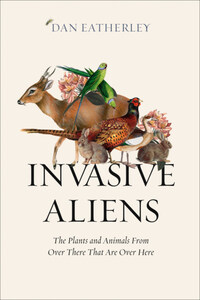William Collins
An imprint of HarperCollinsPublishers
1 London Bridge Street
London SE1 9GF
WilliamCollinsBooks.com
This eBook first published in Great Britain by William Collins in 2019
Copyright © Dan Eatherley 2019
Nineteenth-century engravings on chapter title pages are © Shutterstock, with the exception of chapter 6, which is © ilbusca / Getty Images
Cover design © Jo Walker
Cover images © Getty Images
Dan Eatherley asserts the moral right to be identified as the author of this work.
A catalogue record for this book is available from the British Library.
All rights reserved under International and Pan-American Copyright Conventions. By payment of the required fees, you have been granted the non-exclusive, non-transferable right to access and read the text of this e-book on-screen. No part of this text may be reproduced, transmitted, down-loaded, decompiled, reverse engineered, or stored in or introduced into any information storage and retrieval system, in any form or by any means, whether electronic or mechanical, now known or hereinafter invented, without the express written permission of HarperCollins.
Source ISBN: 9780008262747
eBook Edition © June 2019 ISBN: 9780008262761
Version: 2019-05-28
‘Turkeys, carps, hops, pickerel, and beer,
Came into England all in one year.’
Chronicle of the Kings of England
unto the Death of King James, Sir Richard Baker, 1643
Tetbury, Gloucestershire. 2.30 pm. Wednesday 28 September 2016
The wind had strengthened again and was blowing in short, powerful flurries. Graham paced up and down, his attention focused on the boundary hedges. Drawn by reports of sightings in the area, the team had last week netted several specimens of the invader that had been hawking for prey on ivy clinging to the trunk of one of the garden’s cypresses. A reliable line of sight had been achieved and further samples dispatched for DNA analysis. But that had been all.
Graham approached the conifer once more. No activity here today. As he turned back though, something danced in his peripheral vision, something way up in the cypress closest to the house. Was it his imagination? He squinted for a better look. Sure enough, four, five, maybe six, large-ish insects were whirling about the highest branches.
What the heck were they doing? What on earth was interesting them up there?
Not yet daring to hope, he reached for his binoculars. Within moments Graham confirmed the target species and shouted over to his colleague.
‘Hey Gordon! This could be it!’
Confidence building, Graham scanned the canopy for a few seconds, but saw only thick evergreen branches whipping and twisting in the wind. Frustrating. He stepped back a pace.
In that instant, a gust lifted the foliage enough to reveal a tell-tale patch of light brown against the darker trunk. Had he been standing a foot to the left or right, he would have seen nothing. It was just a glimpse, but now he was certain and made the call to the command centre: ‘I think we’ve found the nest.’ All Graham could do now was wait. And pray he was right.
The National Bee Unit – a division of APHA, the British government’s Animal and Plant Health Agency – has long expected this unwelcome visitor from the far side of the planet. Back home the Asian hornet is on the move, pushing from its native range, on the border of northern India and China, into Indonesia and South Korea. Soon Japan, too, will succumb. The species was confirmed in Europe as early as 2004 when a nest was discovered close to Agen in southwest France. No one really knows how it got there. The best guess is that a year or two earlier some fertile queens had been inadvertently shipped to Bordeaux in a container-load of ceramic pottery from eastern China.
The hornet found the temperate European conditions, similar to those back home, to its liking. Competition from local hornets was minimal – the Asian variety is smaller than its native counterpart, more like a very large wasp; and far quieter. (Experts say the chug-chug-chug of an approaching European hornet calls to mind a lumbering Chinook helicopter. If so, the newcomer is a Stealth fighter.) And it relished the plentiful supply of food in the shape of other aerial insects. This is where the problem lies, for while the Asian hornet is partial to hoverflies, wasps and various types of wild bee, it really goes to town on the honeybee, swooping in on hives to pluck off its far smaller quarry. With a (compound) eye on efficiency, worker hornets behead their prey then dismember it, biting off the wings, legs and abdomen, before taking back to the nest only the thorax, stuffed with protein-rich flight muscles – perfect fodder for the developing hornet brood. It’s the entomological equivalent of a shopping trip for prime rump steak, except the hornets do their own butchery.








